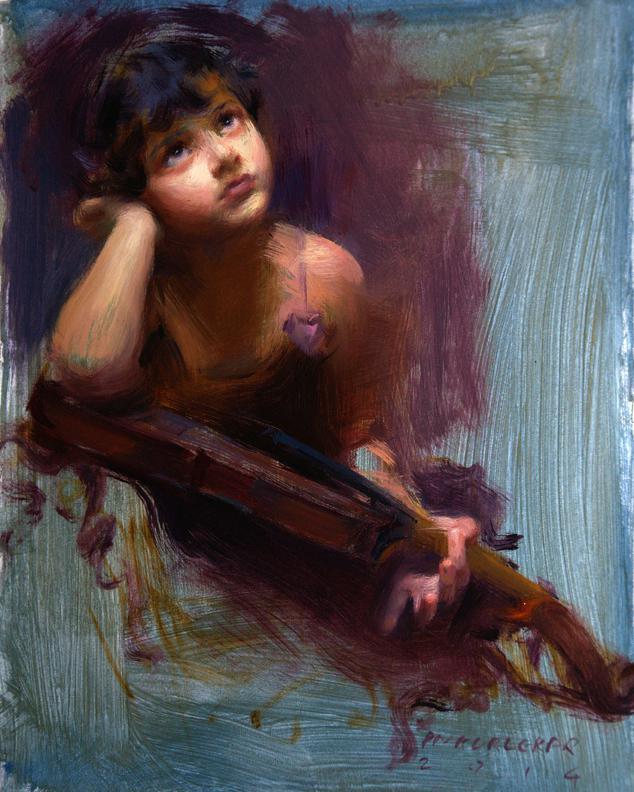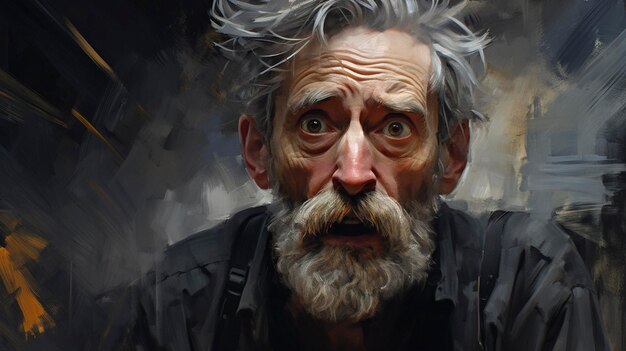Checking Out Iconic Artists and Their Impacts on Figurative Oil Painting
Checking Out Iconic Artists and Their Impacts on Figurative Oil Painting
Blog Article
The Duty of Feeling and Expression in Metaphorical Oil Paint: An In-Depth Evaluation of Topic and Structure
The interplay of feeling and expression in figurative oil paint serves as an important lens via which one can take a look at the detailed partnership between subject matter and make-up. Artists harness different strategies, from shade selection to brushstroke characteristics, to cultivate psychological resonance within their jobs.
Understanding Emotion in Art
Feeling in art works as a powerful channel for expression, permitting artists to convey intricate sensations through their work. In metaphorical oil paint, this psychological deepness is frequently portrayed via the depiction of the human number, recording the nuances of human experience. The selection of subject, color palette, and brushwork all add to the emotional vibration of a piece.
Artists frequently draw upon personal experiences, societal issues, or universal themes to stimulate sensations in the customer. A portrait may show vulnerability, while a vibrant number in activity can signify liberty or turmoil. These emotional threads link the customer to the artwork, promoting a dialogue that transcends the visual medium.
In addition, the interplay in between light and darkness can intensify psychological intensity, directing the visitor's gaze and accentuating specific elements within the structure. Using structure in oil painting better includes layers of intricacy, welcoming a tactile response that improves the emotional experience. Overall, understanding emotion in art is important for valuing the nuances that define metaphorical oil painting, as it transforms plain depiction into a profound expedition of the human condition.
Crucial Element of Make-up
In the realm of figurative oil painting, the composition functions as the underlying structure that organizes aesthetic elements and enhances the emotional narrative. Crucial parts of structure include equilibrium, contrast, focal point, and rhythm, each adding to the overall effect of the artwork.
Equilibrium refers to the distribution of aesthetic weight within the painting, which can be accomplished via balanced or unbalanced setups. A well-balanced structure offers security, enabling the audience to engage with the item harmoniously - figurative oil painting. Contrast, on the other hand, involves juxtaposing various elements, such as dark and light or warm and great shades, to direct the visitor's eye and evoke emotional reactions
The focal factor is crucial, as it guides focus to the most significant part of the paint, frequently highlighting the emotional core of the narrative. By masterfully integrating these essential elements, musicians can craft emotionally resonant and engaging figurative oil paints that mesmerize and engage their target market.
Topic and Its Effect
Topic plays a crucial role in figurative oil paint, as it not only functions as the foundation for the story but also forms the audience's interpretation and psychological engagement with the art work. The option of subject issue-- be it a solitary number, a team dynamic, or a thematic depiction-- straight affects the psychological atmosphere shared to the target market.

For example, portraits usually evoke individual links, revealing the complexities of human expression and character, while scenes depicting public tasks view it can develop a sense of belonging or fond memories. The historic and cultural context of the subject issue enhances the customer's understanding, motivating deeper representations on social norms, values, and the human condition.
Various subjects additionally generate varying degrees of interaction; a remarkable dispute shown with figures in stress might evoke feelings of anxiousness or empathy, while peaceful landscapes can invoke harmony and consideration. Ultimately, the effect of topic in figurative oil paint is profound, as it acts as a conduit for emotional resonance, guiding the customer's feedback and interpretation, and fostering a connection between the artwork and the viewer. This interaction is crucial for the effective interaction of the artist's intent.
Strategies for Evoking Feelings
The efficiency of figurative oil painting in sharing emotions is significantly influenced by the techniques used by the artist. Among the most essential approaches is making use of shade concept, where the calculated selection of shades can evoke particular emotional actions. Warm colors, web link such as oranges and reds, commonly elicit sensations of interest or hostility, while cooler tones like blues and greens have a tendency to stimulate peace or unhappiness.
An additional necessary method is the control of light and darkness, called chiaroscuro. This method enhances the three-dimensionality of numbers, developing remarkable contrasts that can escalate emotional deepness. The positioning of light can direct customers' emotions, highlighting certain aspects of the structure.
Brushwork additionally plays a vital role; loose, meaningful strokes can convey power and spontaneity, whereas smoother techniques might recommend serenity or accuracy. The arrangement of subjects within the make-up can influence psychological influence. Close closeness can recommend intimacy, while distance might show seclusion.
Eventually, the combination of these methods makes it possible for musicians to craft stories that resonate with the audience, transforming a plain aesthetic experience into an expressive emotional trip. - figurative oil painting

Study of Notable Functions
Taking a look at significant works of metaphorical oil painting reveals how different techniques are employed to evoke powerful emotions. One exemplary instance is Edvard Munch's "The Scream," where the altered number and swirling background communicate existential fear. Munch's use shade-- deep blues and vivid oranges-- intensifies the psychological impact, showcasing just how scheme selections can shape customer experience.
Another significant work is Pablo Picasso's "Les Demoiselles d'Avignon." Here, bold brushstrokes and fragmented types reflect a turbulent emotional landscape, challenging conventional representations of the female figure. Picasso's cutting-edge composition not just catches the audience's attention however additionally invites consideration on styles of identification and sexuality.
Additionally, Frida Kahlo's "The 2 Fridas" supplies a poignant exploration of duality and self-identity. The contrasting figures, linked by a common heart, exhibit Kahlo's psychological depth and individual narrative. figurative oil painting. Her thorough interest to detail and symbolic elements serve to involve visitors on a visceral degree
These study emphasize the profound link in between see here feeling and structure in figurative oil paint, revealing just how artists harness technique to communicate complicated feelings and stories that reverberate across time and culture.

Final Thought
Finally, the interaction of feeling and expression in metaphorical oil painting significantly boosts the audience's experience and analysis of the artwork. With a cautious choice of subject issue and compositional methods, artists share extensive narratives that resonate on both universal and individual degrees. The application of color theory, brushwork, and chiaroscuro more intensifies psychological deepness, transforming each canvas right into an effective reflection of the complexities of the human experience.
In figurative oil painting, this psychological depth is commonly depicted with the representation of the human figure, recording the subtleties of human experience.In addition, the interaction in between light and shadow can enhance psychological intensity, leading the customer's stare and attracting focus to specific aspects within the structure. The usage of texture in oil painting even more includes layers of intricacy, welcoming a responsive action that enhances the emotional experience.The focal factor is critical, as it routes focus to the most considerable component of the paint, usually highlighting the psychological core of the narrative. Inevitably, the impact of subject issue in metaphorical oil paint is extensive, as it offers as an avenue for psychological vibration, leading the customer's action and interpretation, and cultivating a link in between the observer and the artwork.
Report this page